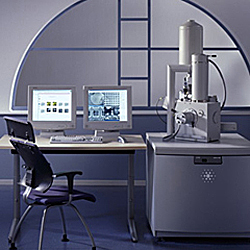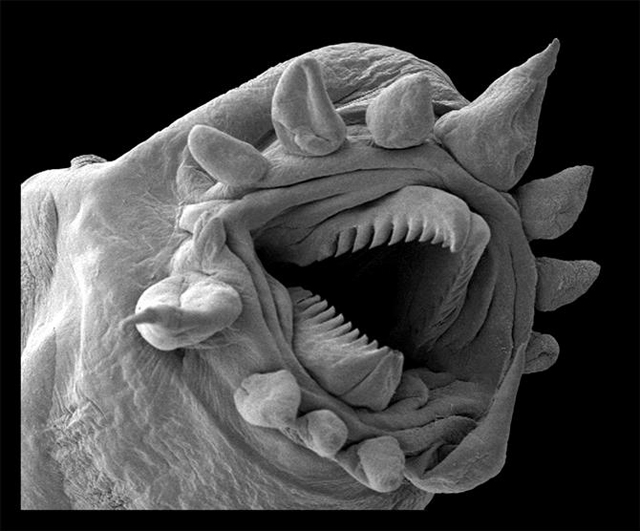Funded through a $530,305 National Science Foundation grant, the environmental scanning electron microscope, or ESEM, will be the first microscope of its kind on the North Coast and will be accessible to HSU faculty and students beginning in 2012. The closest ESEMs are currently located at the University of California, Berkeley and the University of Oregon, Eugene.

“We’re extremely excited to be able bring this technology to Humboldt State,” said Biology Department Chair John Reiss, who co-authored the grant proposal. “It’s going to allow us to greatly expand our research and do a lot of things we can’t do now.”
Environmental scanning electron microscopes use an electron beam to trace the surface of an object. A detector captures electrons that bounce off the sample and creates a highly detailed scan, or 3-D image, of the object. ESEM’s can be used to examine the chemical makeup of volcanic rock, the details of a worm’s nervous system or the nasal cavities of amphibians. They also make it easier for scientists to examine living samples.
“When you see a photo of a flea sitting on a dog’s eyelash – that’s the type of image you can produce with an environmental electron scanning microscope,” said Geology Professor Brandon Schwab, who co-authored the grant proposal.

Scientists introduced electron microscope technology in the early 1930s with the transmission electron microscope, a precursor to the scanning electron microscope, which was developed a few years later.
Humboldt purchased its first transmission electron microscope in the 1960s through a National Science Foundation grant and acquired a scanning electron microscope in 1990. The school added a second scanning electron microscope in 2007. All three are housed in Science C and are part of the college’s Core Facility, a shared equipment and research center for undergraduate, graduate students and faculty.
“We’re looking to have four electron microscopes at HSU, which is pretty unusual in the California State University system,” said Biology Professor Casey Lu, who co-authored the grant proposal. Electron microscope labs are common at large, Ph.D.-granting institutions like U.C. Berkeley.
“Not only is it pretty unusual for us to have an electron microscopy lab, it’s unusual for us to let undergraduate students use it,” Lu said.
The microscope will be housed in a remodeled room in Science C and be accessible for research by undergraduate and graduate students and faculty who have been trained by a microscope technician. The university’s other electron microscopes will be used for teaching.
Community members can learn about the microscope through a permanent
exhibit at the Arcata Natural History Museum, which will periodically host remote microscope demonstrations. High school science teachers will also have the opportunity to operate the microscope remotely after receiving training.
The microscope is fully funded through the National Science Foundation’s Major Research Instrumentation Program, which provides financial support to universities, museums, science centers and non-profits for the purchase of shared scientific and engineering equipment. The grant represents the largest NSF award given to Humboldt this year. The university has received nine grants from the NSF since January, totaling $1.9 million.
For more information on the NSF’s Major Research Instrumentation Program, visit http://www.nsf.gov/od/oia/programs/mri/.